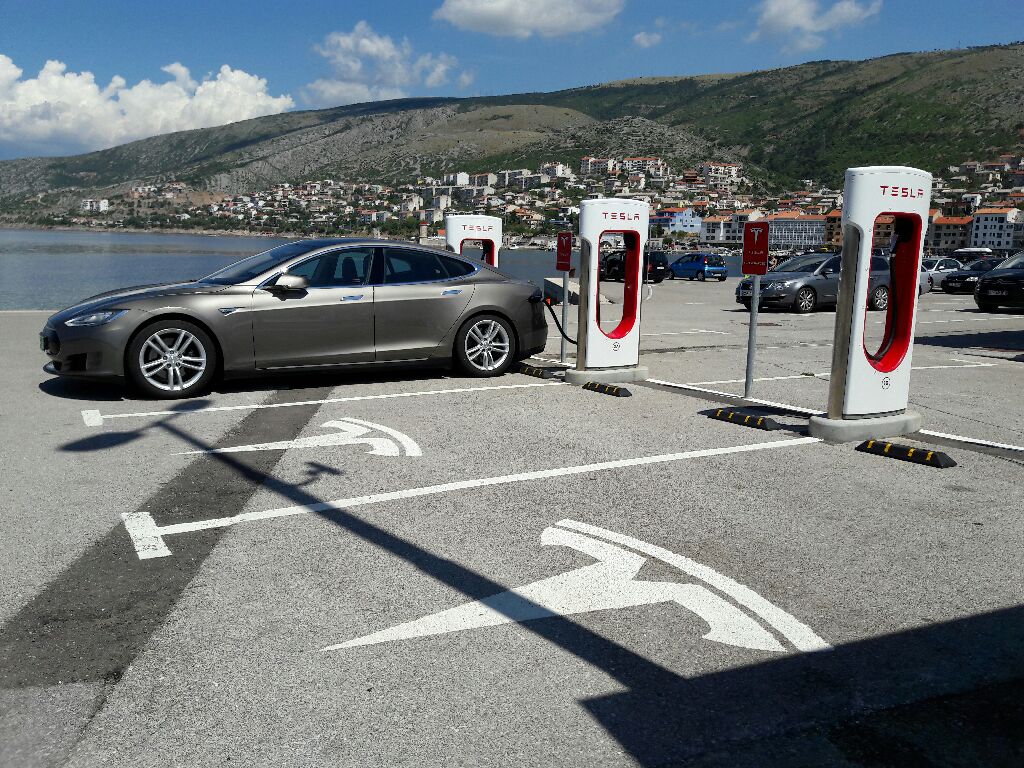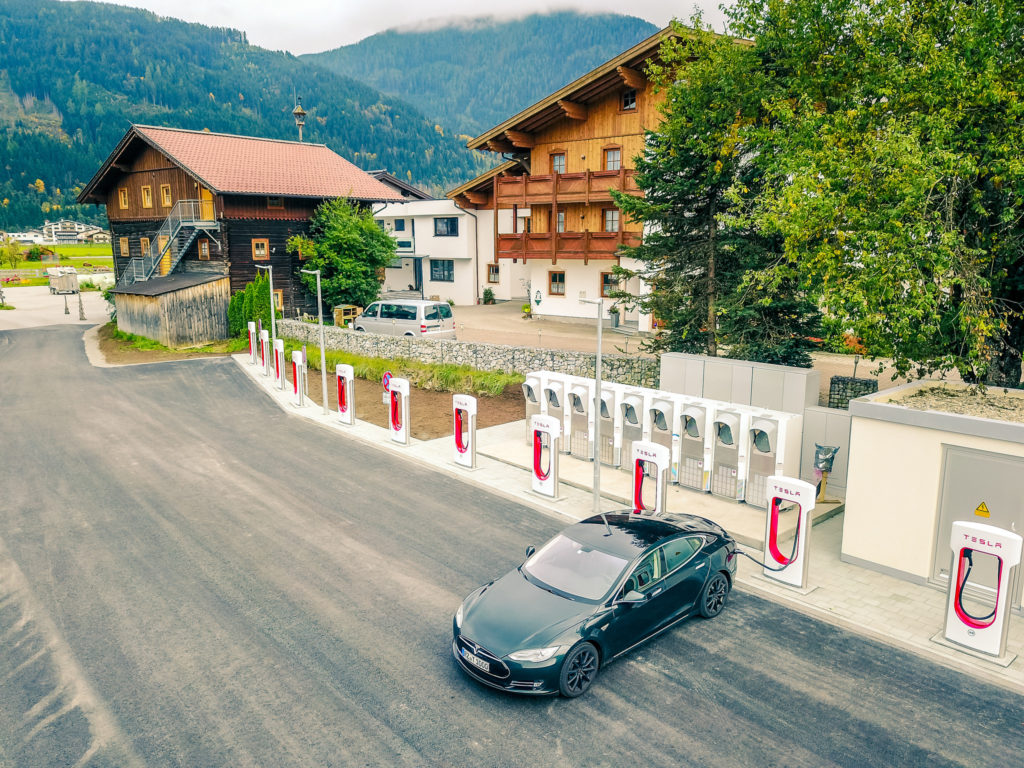

News
Electrifying Europe: An interview with Tesla’s Director of Western Europe [Video]
With so much recent buzz about electric vehicle developments in China, one might have forgotten about the tremendous potential for EVs in Europe. European August year-over-year “EV sales grew by roughly 68%… [and] after eight months of the year, sales have now crossed the 180,000 mark.” according to InsideEVs. Furthermore, “Compared to the U.S., sales in Europe are around 34% higher, and have also been gaining at a higher rate of late.” Sales have also been helped along by a myriad of European government incentives.
But what does this all mean for Tesla’s future in the region? Although Tesla is the leading automaker for EVs in the US, there’s still ample opportunity for growth in Europe. Tesla’s Model S and Model X year-to-date sales in Europe (through August), rank #7 and #9 behind other, more affordable electric models. That said, there’s plenty of runway for growth in Europe.

Tesla’s Supercharger station in Flachau, Austria (Flickr: Jakob Härter)
To uncover more about Tesla in the the region, Tesla’s George Ell recently gave an interview discussing the company’s market opportunity in Western Europe. And, he should know —in 2014 Ell started as Tesla’s Country Director for the UK and Ireland where he went on to grow Tesla’s regional footprint from a single store to 14 locations across the region. Later, in July 2016, he was promoted to Tesla’s Director of Western Europe. Today, Tesla has 20 locations in the UK and 13 across the Netherlands, Belgium and Luxembourg.
Above: Georg Ell, the Director of Tesla for Western Europe, provides his thoughts on the region and Tesla’s overarching vision (Youtube: Verdict)
Ell discusses hot button issues locally where he’s based in London, including CO2 emissions and poor air quality. In the auto industry, he notes that, “we see a take rate of diesel reducing over time” — and it’s no wonder — considering the cartels and collusion that continue to plague the German carmakers. Looking further out, he’s optimistic about efforts by European governments to crack down on carbon emissions. Recent news (see below, via Vox) on this front is, indeed, quite encouraging…
Europe: Fossil fuel phase-out plans
- In June, Norway agreed to end sales of gas and diesel cars by 2025. (Norway leads the world in EVs — almost 40 percent of its newly registered vehicles were hybrid, electric, or hydrogen in 2017.)
- In July, France announced it would end sales of gas and diesel cars by 2040.
- In July, Britain announced it would end sales of gas and diesel cars by 2040.
- In August, German Chancellor Angela Merkel hinted that her country would follow suit. “I cannot name an exact year yet,” she said, “but the approach is right, because if we quickly invest in more charging infrastructure and technology for electric cars, a general changeover will be structurally possible.”
- Last month, the Scottish government announced it would phase out gas and diesel cars by 2032.
- This week, the Dutch government announced that by 2030, all cars in the Netherlands must be emission free
So what’s Tesla’s customer base like in Europe? Ell notes that, “… people love the car. We have an incredibly engaged ownership base that feel emotionally and passionately about their Teslas.” When Ell is asked his opinion about the most exciting thing about working at Tesla, he says: “it’s the scale of our ambition… it feels like we’re having a positive impact on the planet.” Ell explains, “We don’t think of ourselves like just another automotive manufacturer… we think of ourselves as the first vertically integrated energy business.”
===
Note: Article originally published on evannex.com, by Matt Pressman

News
Tesla aims to combat common Full Self-Driving problem with new patent
Tesla writes in the patent that its autonomous and semi-autonomous vehicles are heavily reliant on camera systems to navigate and interact with their environment.

Tesla is aiming to combat a common Full Self-Driving problem with a new patent.
One issue with Tesla’s vision-based approach is that sunlight glare can become a troublesome element of everyday travel. Full Self-Driving is certainly an amazing technology, but there are still things Tesla is aiming to figure out with its development.
Unfortunately, it is extremely difficult to get around this issue, and even humans need ways to combat it when they’re driving, as we commonly use sunglasses or sun visors to give us better visibility.
Cameras obviously do not have these ways to fight sunglare, but a new patent Tesla recently had published aims to fight this through a “glare shield.”
Tesla writes in the patent that its autonomous and semi-autonomous vehicles are heavily reliant on camera systems to navigate and interact with their environment.

The ability to see surroundings is crucial for accurate performance, and glare is one element of interference that has yet to be confronted.
Tesla described the patent, which will utilize “a textured surface composed of an array of micro-cones, or cone-shaped formations, which serve to scatter incident light in various directions, thereby reducing glare and improving camera vision.”

The patent was first spotted by Not a Tesla App.
The design of the micro-cones is the first element of the puzzle to fight the excess glare. The patent says they are “optimized in size, angle, and orientation to minimize Total Hemispherical Reflectance (THR) and reflection penalty, enhancing the camera’s ability to accurately interpret visual data.”
Additionally, there is an electromechanical system for dynamic orientation adjustment, which will allow the micro-cones to move based on the angle of external light sources.
This is not the only thing Tesla is mulling to resolve issues with sunlight glare, as it has also worked on two other ways to combat the problem. One thing the company has discussed is a direct photon count.
CEO Elon Musk said during the Q2 Earnings Call:
“We use an approach which is direct photon count. When you see a processed image, so the image that goes from the sort of photon counter — the silicon photon counter — that then goes through a digital signal processor or image signal processor, that’s normally what happens. And then the image that you see looks all washed out, because if you point the camera at the sun, the post-processing of the photon counting washes things out.”
Future Hardware iterations, like Hardware 5 and Hardware 6, could also integrate better solutions for the sunglare issue, such as neutral density filters or heated lenses, aiming to solve glare more effectively.
Elon Musk
Delaware Supreme Court reinstates Elon Musk’s 2018 Tesla CEO pay package
The unanimous decision criticized the prior total rescission as “improper and inequitable,” arguing that it left Musk uncompensated for six years of transformative leadership at Tesla.

The Delaware Supreme Court has overturned a lower court ruling, reinstating Elon Musk’s 2018 compensation package originally valued at $56 billion but now worth approximately $139 billion due to Tesla’s soaring stock price.
The unanimous decision criticized the prior total rescission as “improper and inequitable,” arguing that it left Musk uncompensated for six years of transformative leadership at Tesla. Musk quickly celebrated the outcome on X, stating that he felt “vindicated.” He also shared his gratitude to TSLA shareholders.
Delaware Supreme Court makes a decision
In a 49-page ruling Friday, the Delaware Supreme Court reversed Chancellor Kathaleen McCormick’s 2024 decision that voided the 2018 package over alleged board conflicts and inadequate shareholder disclosures. The high court acknowledged varying views on liability but agreed rescission was excessive, stating it “leaves Musk uncompensated for his time and efforts over a period of six years.”
The 2018 plan granted Musk options on about 304 million shares upon hitting aggressive milestones, all of which were achieved ahead of time. Shareholders overwhelmingly approved it initially in 2018 and ratified it once again in 2024 after the Delaware lower court struck it down. The case against Musk’s 2018 pay package was filed by plaintiff Richard Tornetta, who held just nine shares when the compensation plan was approved.
A hard-fought victory
As noted in a Reuters report, Tesla’s win avoids a potential $26 billion earnings hit from replacing the award at current prices. Tesla, now Texas-incorporated, had hedged with interim plans, including a November 2025 shareholder-approved package potentially worth $878 billion tied to Robotaxi and Optimus goals and other extremely aggressive operational milestones.
The saga surrounding Elon Musk’s 2018 pay package ultimately damaged Delaware’s corporate appeal, prompting a number of high-profile firms, such as Dropbox, Roblox, Trade Desk, and Coinbase, to follow Tesla’s exodus out of the state. What added more fuel to the issue was the fact that Tornetta’s legal team, following the lower court’s 2024 decision, demanded a fee request of more than $5.1 billion worth of TSLA stock, which was equal to an hourly rate of over $200,000.
Delaware Supreme Court Elon Musk 2018 Pay Package by Simon Alvarez
News
Tesla Cybercab tests are going on overdrive with production-ready units
Tesla is ramping its real-world tests of the Cybercab, with multiple sightings of the vehicle being reported across social media this week.

Tesla is ramping its real-world tests of the Cybercab, with multiple sightings of the autonomous two-seater being reported across social media this week. Based on videos of the vehicle that have been shared online, it appears that Cybercab tests are underway across multiple states.
Recent Cybercab sightings
Reports of Cybercab tests have ramped this week, with a vehicle that looked like a production-ready prototype being spotted at Apple’s Visitor Center in California. The vehicle in this sighting was interesting as it was equipped with a steering wheel. The vehicle also featured some changes to the design of its brake lights.
The Cybercab was also filmed testing at the Fremont factory’s test track, which also seemed to involve a vehicle that looked production-ready. This also seemed to be the case for a Cybercab that was spotted in Austin, Texas, which happened to be undergoing real-world tests. Overall, these sightings suggest that Cybercab testing is fully underway, and the vehicle is really moving towards production.
Production design all but finalized?
Recently, a near-production-ready Cybercab was showcased at Tesla’s Santana Row showroom in San Jose. The vehicle was equipped with frameless windows, dual windshield wipers, powered butterfly door struts, an extended front splitter, an updated lightbar, new wheel covers, and a license plate bracket. Interior updates include redesigned dash/door panels, refined seats with center cupholders, updated carpet, and what appeared to be improved legroom.
There seems to be a pretty good chance that the Cybercab’s design has been all but finalized, at least considering Elon Musk’s comments at the 2025 Annual Shareholder Meeting. During the event, Musk confirmed that the vehicle will enter production around April 2026, and its production targets will be quite ambitious.








